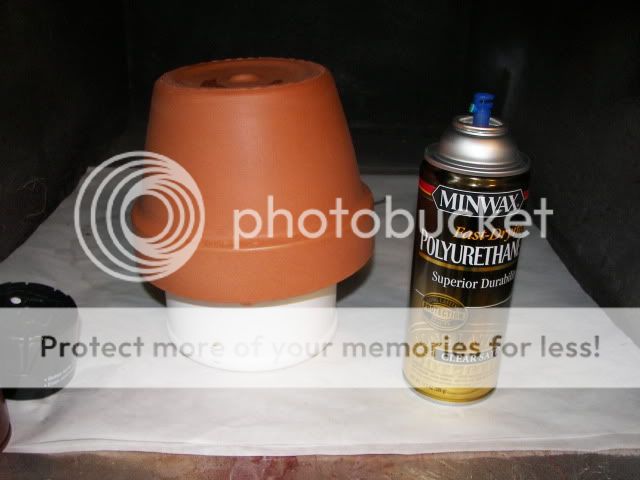by
Rachel Pollock, Crafts Artisan
I initially thought this was a two-part post but I've realized that I'm going to need to split this into three, I think. At the end of the
prior post on the topic, all four multiples had been blocked into the desired shape, using a terra cotta flowerpot as a crown block and a brim block I made a couple years ago for
The Importance of Being Earnest.
The next step for all the hats was to wire and bind the brim edges and line them.
For some felt styles (say, a fedora), you might choose not to wire the brim edge, but I chose to on these for a couple of reasons. First, the wire and binding will go a long way in helping to maintain the upward curl of the brim in places, since it offers a strong reinforcement to the shape which was initially created in the blocking and sizing process.
Second, these hats are taken off and put back on multiple times an evening, by both the actress herself and her dressers. They need to be as sturdy as possible to withstand that much handling (consider that in "real life," you might wear this hat once a week, tops, if it were your favorite hat, whereas this hat is being worn every night of the week and twice on matinee days).
And third, the designer wanted them finished with this super-cute pinked-edge burgundy suede binding from
Mokuba, so we had a perfect means to hide the wiring built into the look itself.
I also tend to line my hats for stage before trimming them out. For a streetwear/fashion hat, you would wait til after trimming to line it to hide the interior stitches securing the trim, but because hats for stage go through SO much aesthetic change in the tech process (on these we have changed the trim on three of the styles twice now, and we aren't even through previews yet), I line before trimming. On felt hats like this one, the lining serves as a stabilizer, too, so that the felt of the hat doesn't bear all the stress of the stitches attaching the trim, so that's a nice secondary benefit to this decision.
My primary assistants at this point were first year graduate Leah Pelz and PRC's staff Costume Technician, Adam Lukas Land, though on at least one occasion I had five undergraduates all at some stage of some craft process working in my room as well. It was fun, all of us working on hats in various stages of completion a taste of what it must have been like to work in the production room of a 19th century milliner's studio when these types of hats were originally made.

Here's a shot of the hats with their brims wired and bound.

Each hat is lined in a crossweave taffeta, with the label set into the crown. These have not only the actress/role name in them, but also the hat number.
The next step was to begin trimming them out, and since the hat trim was intended to be a physical representation of the metamorphosis of the character of
Mrs. Daldry over the course of the play, this involved a lot of discussion with costume designer
Anne Kennedy about how that was to manifest in the decor.
The first time
Mrs. Daldry is introduced to the audience, she and her husband have arrived for an appointment with
Dr. Givings, who treats patients for "hysteria," which in
Mrs. Daldry's case seems to denote what we would call depression today. She doesn't leave the house or open the curtains in her room, and she shuns light by wearing a veil on her hat. We also learn that she isn't happy with her marriage, and that their childlessness is causing both the Daldrys grief.

First hat, with rust net veil edged in narrow brown ribbon shot with a single iridescent strand. The veil attaches to the hat with a brown embossed-stripe velvet ribbon bow.

The hat itself is trimmed in a ruched band of crossweave silk taffeta with a topstitched plaid pattern.

Katie Paxton as Mrs. Daldry
Jeffrey Blair Cornell as Mr. Daldry
(Photo by Jon Gardiner.)
For the second hat, Mrs. Daldry is returning to the doctor's for further "treatment" of her hysteria. She has begun to play the piano again, something her depression (or "hysteria") had previously prevented her from doing. She is far from happy, but she is taking her first steps toward a better frame of mind.
In millinery terms, the idea is that she's taken her hat to the local milliner and asked that it be made over to a bit more daring and (for 1880) modern style. Ladies magazines of the time were showing styles that featured a lot of verticality in trims--towering loops of ribbon and feather sprays, and even bird wings (some mock, some real). The veil has been abandoned, as she no longer needs a physical barrier between herself and the world in order to cope with leaving her house, and she has begun to rediscover an appreciation for sunlight and gardens.
The decor of Hat #2 features a confection of ribbons as a hatband and ornaments, scattered silk flowers and leaves, and an actual antique millinery "wing" (not a taxidermized actual bird's wing, but a piece of decoration made from dyed feathers to resemble one).

Front view
The trim on the crown of this hat is where ribbon candy gets its name!

Side front

Profile view

Side back

Katie Paxton as Mrs. Daldry
(Photo by Jon Gardiner.)
I'll stop there, and follow up in a third post on the third and fourth hats, which evolve even further into the realm of elaborate and symbolic trimmings!






































